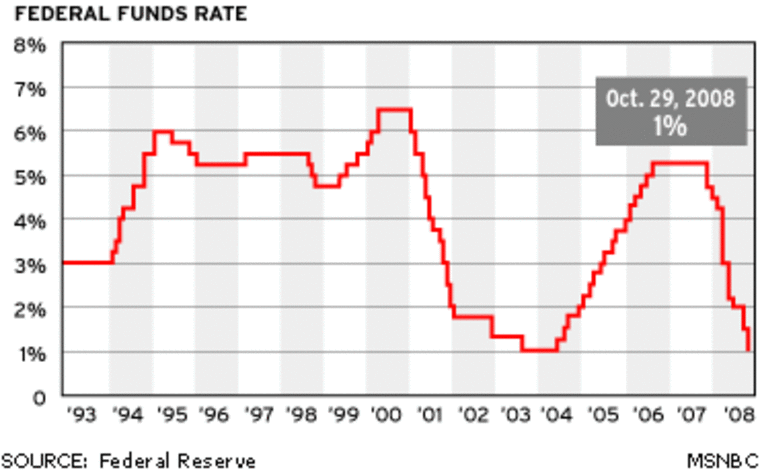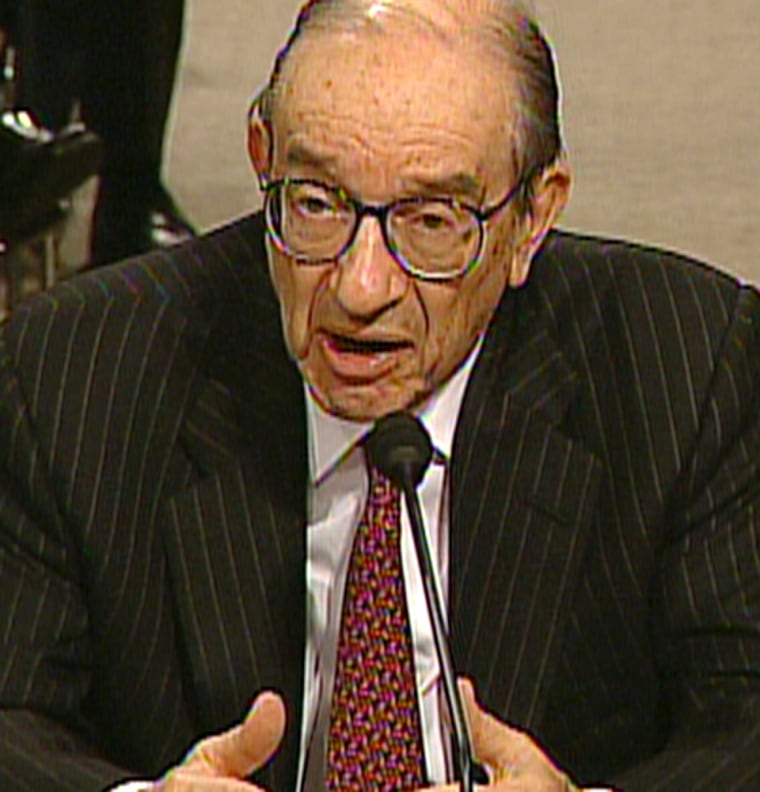Federal Reserve Chairman Alan Greenspan laid the groundwork Wednesday for higher interest rates but suggested the central bank is in no hurry to act — despite the latest reports indicating strong economic growth and rising inflation.
An upbeat Greenspan, appearing before the Joint Economic Committee of Congress, noted the economy has “entered a period of more vigorous expansion” that appears likely to continue and reiterated that unusually low short-term interest rates “must rise at some point” to prevent inflation from re-emerging.
While many market analysts have grown increasingly confident the Fed will raise its benchmark federal funds rate this summer, Greenspan was careful to leave himself and his central bank colleagues room for a flexible response to the emerging economic picture.
In an exchange with Sen. Paul Sarbanes, D-Md., Greenspan said that just because the Fed raises its benchmark interest rate does not mean inevitably it will raise rates repeatedly “for a protracted period.” There is no “timeframe” for such rate cycles, the Fed chief said. Instead, central bankers make such decisions on a continual basis as they evaluate changing economic conditions.
“There have been a number of occasions in which we’ve made one move and stopped,” Greenspan said.
“Rates are obviously going to go up sooner or later, but there is a lot of flexibility here,” said Sung Won Sohn, chief economist at Wells Fargo.
Greenspan, making his first extensive comments about the economy in nearly two months, succeeded in calming financial markets after he sent stock and bond prices tumbling Tuesday with comments that presumed a coming period of rising interest rates. While he did not explicitly back away from that view Wednesday, he stressed that inflation appears to be well under control, which would give the Fed a bit more time before it would feel pressured to act.
Stock and bond prices rose modestly after Greenspan’s latest Capitol Hill appearance, sending market interest rates a bit lower.
Since the Labor Department reported April 2 that the economy added 308,000 jobs in March, financial markets have moved rapidly to the view that the Fed will raise rates this summer, possibly in June or August, rather than waiting until later in the year or even into 2005. And with the presidential election looming in November, some analysts have begun urging the Fed to begin acting soon to avoid the need for larger rate hikes later.
"Ideally it would be nice if the fed could tighten as soon as June," said Diane Swonk, chief economist for Bank One. "That way they could tighten more slowly and gradually, instead of saving all the heavy lifting for next year."
The benchmark overnight rate controlled by the Fed has been at an unusually low 1 percent since last June, when the central bank cut it for a 13th time in a nearly unprecedented campaign to boost a sluggish economy.

The economy, helped along by federal tax cuts, responded with the strongest growth in 20 years, although almost no growth in employment was seen until this month. Still, Greenspan said labor costs “have yet to post a decisive upturn,” which is why he is confident that consumer inflation is unlikely to accelerate much in the near term, despite a surprising spike in prices last month.
"As I have noted previously, the federal funds rate must rise at some point to prevent pressures on price inflation from eventually emerging," Greenspan said. "As yet, the protracted period of monetary accommodation has not fostered an environment in which broad-based inflation pressures appear to be building."
While commodity prices clearly have been rising, labor costs are far more important in determining the course of inflation, Greenspan noted.
“There is still plenty of slack in the labor markets,” said Swonk. “They’re going to let inflation pick up a little bit before they raise rates.”
The Fed’s rate-setting Open Market Committee next meets May 4, and while no move on interest rates is expected, the central bank almost certainly will change its statement to reflect the latest change in economic conditions, particularly inflation. For much of last year, the Fed was concerned with the remote but potentially devastating possibility of broadly falling prices, or deflation. That danger “presumably has come to an end,” Greenspan said, a fact that likely will be reflected in the Fed’s formal statement after the May 4 meeting.
After that the Fed’s direction will depend heavily on economic indicators to be released over the next several months, led by employment and inflation. Greenspan indicated that even as productivity falls from its recent unusually high levels and hiring steps up, employers might be willing to accept lower profit margins rather than pass on higher costs to consumers. But that remains to be seen, said Lynn Reaser, chief economist for Banc of America Capital Management.
If the data remains erratic or shows only modest growth in employment, the Fed could stay on hold even beyond the election, she said.
But the election itself is unlikely to play a major role in the actions of central bankers. The last scheduled meeting of policy-makers before Election Day is Sept. 21, six weeks before the Nov. 2 presidential election. The Fed will not hesitate to raise rates if needed at meetings in June, August or September, analysts said.
“If the numbers are very strong and they are not moving they would be vulnerable to criticism that they are being political,” Reaser said. “Inaction is considered an action in this environment.”
